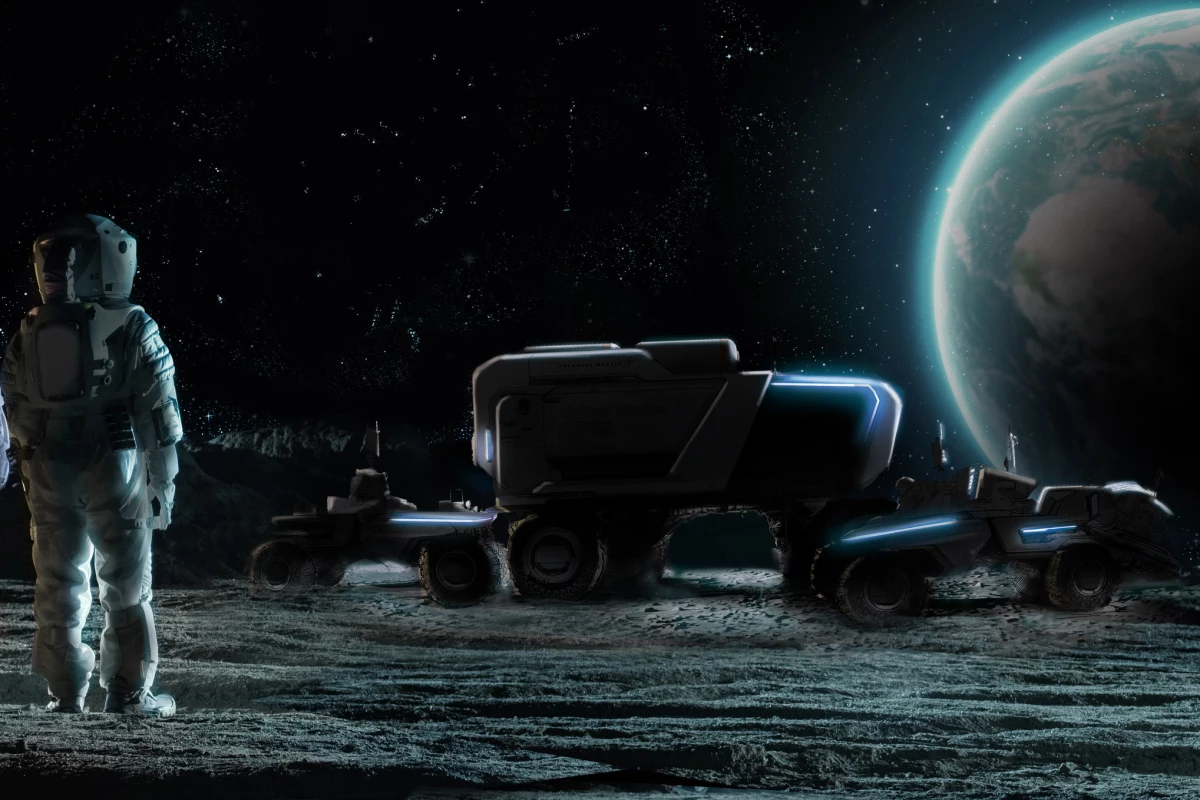Lockheed Martin and General Motors are teaming up to develop a next-generation rover for NASA's Artemis program. Called the Lunar Terrain Vehicle (LTV), it will not only carry astronauts about, but will also operate autonomously.
The 1972 Apollo 17 mission was not only the last time astronauts walked on the Moon, but also the last time they drove on it. Among the equipment packed in Cernan and Schmitt's Lunar Module was a 460-lb (260-kg) electric-powered Lunar Roving Vehicle (LRV) of a type that first flew on Apollo 15. Able to travel at a blistering 11.2 mph (18 km/h), it carried the astronauts up to 4.7 miles (7.6 km) from the landing site – allowing them to explore much more of the area.
Since then, the bottom has fallen out of the Moon car market, but NASA is hoping to turn that around for its Artemis project that aims at not only returning astronauts to the Moon, but also establishing a permanent human presence there. To support this, the space agency wants electric vehicles that build on the success of the Apollo rovers to explore the 95 percent of the lunar surface that is yet to be visited by humans.

The new rovers won't be delivered on the same lander as the astronauts, but will be capable of operating autonomously or under remote control from a surface base or the Gateway deep-space outpost after deploying from an uncrewed spacecraft, so they will be able to carry out tasks on their own before going to meet the arriving outpost crew. This will allow the missions to do more science or commercial jobs in a smaller amount of time. Illustrations show the planned rover as having a pressurized cab, which means that astronauts can carry out much longer trips in comfort.
The rovers will be able to operate in rugged terrain and withstand the extreme temperatures of the Moon, which can go from 280 °F (138 °C) in sunlight to -260 °F (-162 °C) at night or in the shadows. This will not only allow it to explore areas like the lunar south pole, but also survive the 14-day lunar nights, which would have destroyed the batteries and electronics of the Apollo-era vehicles.
"The biggest difference is, when you design for the Moon and for space applications, the force of gravity is different and has to be taken into account," says Madhu Raghavan, Global Research & Development Group Manager at GM. "There are extreme temperature swings, and the radiation in space becomes a challenge in terms of systems design. You’re also operating in a vacuum and designing your systems to withstand the shock of the actual launch."
The video below introduces the new lunar rover.
Source: Lockheed Martin





